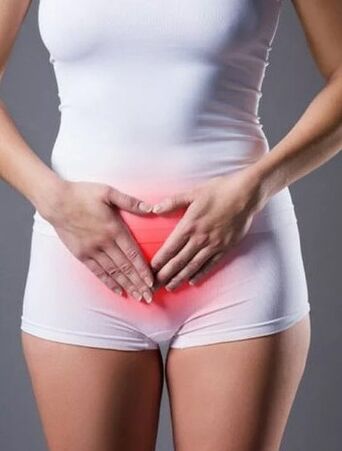Cystitis is an inflammatory process localized in the bladder. As a result, inflammation of the urethra develops or urethra or urethra.
Typical properties of cystitis:
- The remaining feeling of burning and rubber at the end and immediately after urinating
- Painful urination
- Localized pain syndrome in the lower abdomen and lumbar region
- Urine incontinence is possible
- To change the color of the urine (bloody or muddy)
- Increased body temperature to fever
- Deterioration of the general well.
The causes of illness
Cystitis provoking factors serve:
Infectious factor:
- This is represented by an E. coli, streptococci and/or staphylococcus, given the close position of the anus and urethra (in women);
- Sexual infections (ureaplasma and mycoplasma);
- Instrumental intervention or introduction of infection in the urethra or bladder (most often microorganisms Gram-negative cell wall);
- Fungi, chlamydia, viruses;
- Inflammation in the gangiturinary organs of man (seed bubbles, testic appendages, etc. );
- Tumor formations;
- Anatomical differences;
- Allergy to nursing products (vaginal deodorants, colored toilet paper, talc, all kinds of perfume soap);
- Rare urination (feature of elderly people).
Diagnosis
The following laboratory methods are used to diagnose the disease:
- Blood test (general) shows changes between which there is a moderate inflammatory process
- Analysis of urine (general) shows color changes due to the presence of uric acid, leukocytes, red blood cells, protein
- Urine analysis with Nechiporenko allows you to examine the organs and condition of the genitourinary system by calculating the number of leukocytes, red blood cells and rollers in the urine. The results of the test are influenced by the correctness of the substance and the patients are influenced by the rules of personal hygiene.
- The pathogenic microflora can be detected with increased nitrates in the urine, detected with a strip of indicator
- The presence of pus in the urine is detected by a leukocyte evening reaction.
In addition to laboratory diagnostics to detect cystitis, instrumental methods are also performed, the most common of which are cytoscape, biopsy, ultrasound, STD/STPP diagnosis and others.
Complication
Cystitis can not only be chronic, but also complicated diseases such as:
- a condition in which kidney function disrupts - the volume of the liberated urine is reduced
The inflammation covers the mucosal membrane and the muscle layer of the kidney, which is replaced by the result of the cytry tissue, which leads to a reduction in kidney size and capsule elasticity.
PMR - Damage to the structure of the valves, as a result of which the urine flows out - returns to the kidneys. At the same time, the localization of the infection in the urinary system is preserved, and the chronic form of pyelonephritis, the scarring of the kidney tissues and the functioning of the completely damaged kidney occur.
Treatment of the disease
Therapy for the disease is based on the elimination of microbial inflammation, which is often due to the weakened immune condition. Therefore, the treatment of pathology involves the use of the following groups of drugs:
- Anti -inflammatory drugs (NSAID)
- Antibacterial drugs
- Immunomodulators.
Risk group
The risk group has weakened immunity, HIV-infected and pregnant women.
Prevention
Cystitis prevention measures are served:
- The lack of hypothermia
- Examination of a six -month gynecologist to STD/SPPP
- Strict adherence to hygiene, especially during sexual relationship
- The rejection of narrow (straps) and synthetic underwear
- Care of lubrication sufficient during intimacy
- Proper food diet
- To prevent constipation
- Strengthening immunity.
Diet and lifestyle
When manifesting signs of pathology, the use of solid foods should be restricted and replaced with broth, yogurts, mashed potatoes and large amounts of fluid. After a decrease in acute symptoms, a gradual introduction of solid foods is allowed - from cereals, nuts and legumes. Various freshly pressed juices (both vegetables and fruits) are useful for the body.
When observing fever, bedding, densities and warm baths should be used. You can eliminate stagnant phenomena with cold compresses.




























